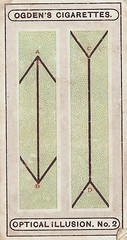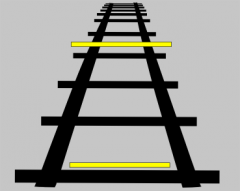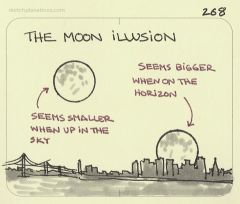![]()
![]()
![]()
Use LEFT and RIGHT arrow keys to navigate between flashcards;
Use UP and DOWN arrow keys to flip the card;
H to show hint;
A reads text to speech;
36 Cards in this Set
- Front
- Back
|
Color |
|
|
|
Purpose of Color
|
-eating (save yourself from two berries that look the same, but on color is poisonous)
-not being eaten (detect predators) |
|
|
Is Color Real? |
Color is not an objective truth, it's how we perceive wavelengths. |
|
|
Additive vs. Subtractive Color Mixing |
Additive: the creation of colors that occurs when lights of different colors are superimposed Subtractive: the creation of colors that occurs when paints of different colors are mixed together |
|
|
Trichromatic Theory |
A theory proposing that our perception of color is determined by the ratio of activity in three receptor mechanisms with different spectral sensitivites |
|
|
Problem of Univariance |
any wavelength can produce any activation |
|
|
Metamers |
Two lights that have different wavelength distributions but are perceptually identical |
|
|
Ratio |
two areas that reflect the same amount of lights will have the same perceived lightness if the ratios of their intensities to the intensities of their surroundings are the same |
|
|
Opponent Process Theory |
claims that our perception of color is determined by the activity of two opponent mechanisms: a blue-yellow mechanism and a red-green mechanism (black-white for brightness) in each mechanism, one color is excitatory and the other inhibatory |
|
|
Color Constancy |
the perception of an object's hue remains constant even when the wavelength distribution of the illumination is changed |
|
|
Lightness Constancy |
the constancy of our perception of an object's lightness under different intensities of illumination |
|
|
Chromatic Adaptation |
exposure to light in a specific part of the visual spectrum this adaption can cause a decrease in sensitivity to light from the area of the spectrum that was presented during adaptation |
|
|
Reflectance Edge |
an edge between two areas where the reflectance of two surfaces changes |
|
|
Illumination Edge |
the border between two areas created by different light intensities in the two areas |
|
|
The Usefulness of Shadows |
known or irregular shapes help designate illumination
|
|
|
Depth |
|
|
|
Oculomotor Cues |
Convergence: the inward movement of the eyes that occurs when we look at nearby objects Accommodation: the change in the shape of the lens that occurs when we focus on objects at various distances |
|
|
Pictorial Cues (next 8 cards) |
sources of depth information that can be depicted in a picture |
|
|
Occlusion |
one object hides or partially hides another object from view, causing the hidden object to be perceived as being farther away |
|
|
Relative Height |
objects that have bases below the horizon appear to be farther away when they are higher in the field of view |
|
|
Relative Size |
when two objects are of equal size, the one that is farther away will take up less of the field of view |
|
|
Perspective Convergence |
the perception that parallel lines in the distance converge as distance increases |
|
|
Familiar Size |
judgement of distance is based on knowledge of the sizes of objects |
|
|
Atmospheric Perspective |
objects that are farther away look more blurred and bluer than objects that are closer because we must look through more air and particles to see them |
|
|
Texture Gradient |
the visual pattern formed by a regularly textured surface that extends away from the observer |
|
|
Shadows |
can provide location (ex. ball floating above or resting on table) as well as enhance three-dimensionality |
|
|
Monocular Cues |
depth cue (such as overlap, relative size and height, familiar size, linear perspective, motion parallax, and accommodation) that can work when we use only one eye |
|
|
Binocular Cues |
depth cue that only works with both eyes |
|
|
Relative Disparity |
the difference between two objects' absolute disparity |
|
|
Absolute Disparity |
when images of an object fall on corresponding points, the angle of disparity is zero when images fall on non-corresponding points, the angle of disparity indicates the degree of non-correspondence |
|
|
Visual Angle |
the angle of an object relative to an observer's eye because an object's visual angle is always determined relative to an observer, it's visual angle changes as the distance between the object and the observer changes |
|
|
Size Constancy |
occurs when the size of an object is perceived to remain the same even when it is viewed from different distances |
|
|
Illusions |
|
|
|
Muller-Lyer |

|
|
|
Ponzo |

|
|
|
Moon Illusion |

|

